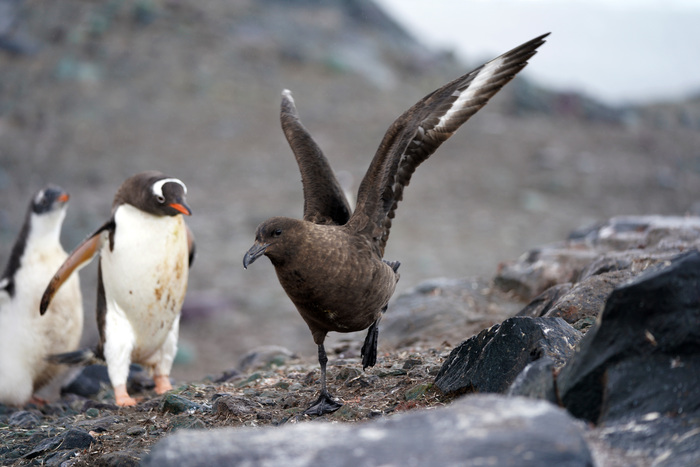Enlarge image
Nests of the icefish »Neopagetopsis ionah«
Photo: AWI OFOBS
Researchers from the Alfred Wegener Institute have made a wondrous discovery on the sea floor in Antarctica – thousands of ice fish nests.
The institute announced that the scientists had discovered the largest fish breeding area known to date.
The researchers published their findings in the journal Current Biology.
"The density of the nests and the size of the overall breeding area suggest a total of about 60 million icefish that nested there during the survey," says a statement.
Remote-controlled cameras filmed the huge cluster of nests near the Filchner Ice Shelf in southern Antarctica's Weddell Sea.
“There was great joy when, in February 2021, researchers saw countless fish nests on the monitors on board the research vessel Polarstern, which their towed camera system transmitted live on board from the seabed at a depth of 535 to 420 meters in the Antarctic Weddell Sea,” report the scientists.
The longer the operation lasted, the more spectacular the find became: nest after nest, and the later exact evaluation showed that there was an average of one breeding ground on three square meters.
The mapping of the area suggests a total area of 240 square kilometers.
That is roughly the size of the island of Malta.
"The idea that such a huge icefish breeding area has never been discovered in the Weddell Sea is absolutely fascinating," says Autun Purser, a deep-sea biologist at the Alfred Wegener Institute.
After all, the scientists have been exploring the area with the icebreaker Polarstern since the early 1980s.
The observations were made with a camera sled that was developed for studying the seabed in extreme environments such as ice-covered regions.
To do this, the system is towed about one and a half meters above the sea floor on a special fiber optic and power cable at a speed of 0.9 to 1.8 kilometers per hour.
"After the spectacular discovery of the many fish nests, we on board came up with a strategy as to how we could best find out how large the dimensions of the breeding area are - there was literally no end in sight," says Autun Purser.
“The nests are much larger than the sometimes centimeter-sized structures and creatures that we usually track down.”
“We were therefore able to increase the height above ground to around three meters and the towing speed to a maximum of three knots, thus multiplying the area examined.
We scanned an area of 45,600 square meters and counted an incredible 16,160 fish nests on the photo and video material," said Purser.
fww








/cloudfront-eu-central-1.images.arcpublishing.com/prisa/DBT2OEOLXBGZTLYKDBM2FWSJNM.jpg)





